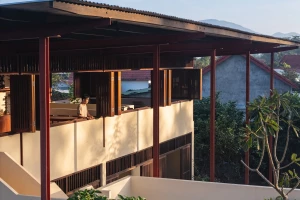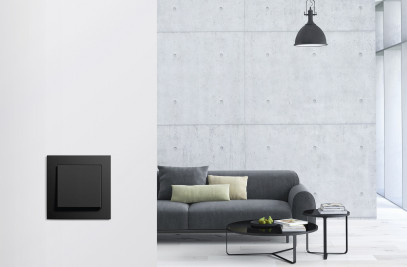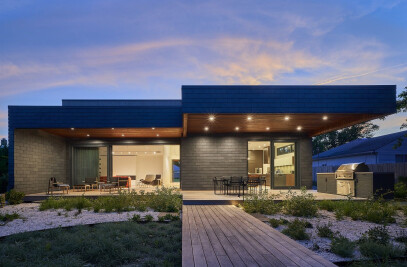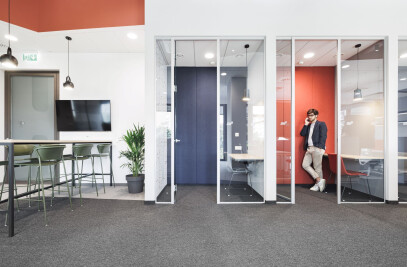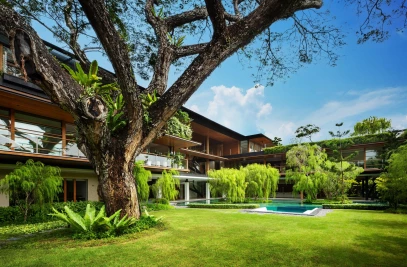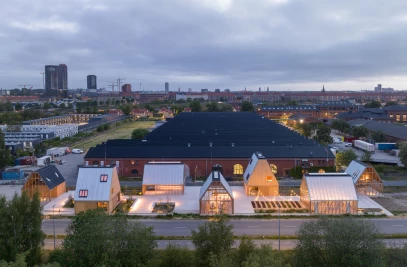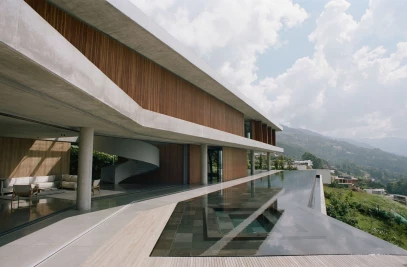On the south bank of the Parramatta River in Western Sydney, Powerhouse's new cultural flagship, which is to be one of the world's most significant new museum projects, is set to open in 2025. Designed by Paris-based architect Moreau Kusunoki, founded by Nicolas Moreau and Hiroko Kusunoki, in collaboration with the Australian office in Genton, the museum results from an international competition. Powerhouse is Australia’s largest museum group and with this AUD $1.4 billion transformation, the new museum will become the largest infrastructure project realized in the city since the completion of the Sydney Opera House.
Today, Parramatta is a rapidly developing urban hub, with new towers under construction and billions of dollars of government investment into infrastructure, including a new light rail transit system, a new ferry wharf, and a new Metro train system. Now Sydney's second Central Business District, Parramatta, is also one of Australia's most culturally diverse communities.
The site:
The site, bordered by the Parramatta River to the north, Wilde Avenue to the east, Phillip Street to the south, and Church Street to the west, will form part of an integrated arts and cultural precinct alongside the Parramatta Riverside Theatres and the Parramatta North Heritage Core.
The museum concept comprises two connected rectangular volumes, one taller than the other. A new route from the city to the riverside runs between the two volumes, which sit lightly upon the ground. The new building volume is vertical, preserving two-thirds of the site for public domain, a priority for the architects whose aim was to give back a generous amount of green space to the community, encourage pedestrian movement, and offer a welcoming new precinct that connects communities with the river through cultural programs and recreation.
Exterior exoskeleton:
The exterior of the building is enveloped in a white steel lattice. Expressed in three levels of scale and complexity, with the steel members reducing in size and refining as the building rises, the lattice forms the building's façade and its support structure – the exoskeleton. The geometry of the lattice structure dramatically reduces the amount of material needed to support the building's physical load and also lightens the visual presence of the steel. At ground level, where the lattice columns are thickest, they filter light, which continues all the way up the building and through the interplay between different geometries.
The exoskeleton is very clear and honest, emphasizing a feeling of accessibility, the architects explain. The lattice also makes for extreme transparency so that activity and movement within animate the building from outside. It is also possible to note a reference to Sydney Harbour Bridge in the lattice structure. The influence of Centre Pompidou, close to Moreau Kusunoki's Paris office and standing as a ground-breaking model for a museum building with an external structure, is also acknowledged.
The lattice design emerged from discussions between the architects and the distinguished Tokyo University professor of engineering, Jun Sato, whose initial sketches were vital in defining its geometry. The exoskeleton is being realized with the hands-on expertise of ARUP Engineer Kengo Takamatsu.
Interior and exhibitions:
The architects have designed a new type of building for a new kind of museology, taking a radically different approach by inviting people to find their own way of experiencing a cultural institution rather than leading them from exhibit to exhibit, following the more pedagogical approach of 20th-century museology. One of the critical attributes of the concept is extreme flexibility, allowing spaces to remain receptive to future and now-unknown creative opportunities. This is supported thanks to a column-free interior and structural design.
Access between floors will be via escalators and elevators, and natural light and views at every level will make traveling and lingering around the building an extraordinary experience. As visitors go up the building, noise from the outside world will gradually fade so that people will have a different experience of the landscape and their experience with it.
In occupying the building, people may choose to meet with others or to enjoy the quieter interstitial areas, or 'Mâ' areas, of the building. Coming from the Japanese term, Mâ can have many interpretations – it is a kind of interval, a vacancy, not just in space, but also in time, like an unspoken message or the silence between musical notes. Essential to the building, these interstitial areas tend to be close to the exoskeleton, where light and shade cross quiet areas, enabling children to play or adults to enjoy a moment of meditation, drink a coffee from a café, or connect with the panorama outside.
Powerhouse has announced that they will deliver dynamic, changing exhibitions and programs that constantly transform the interior scale. This will be supported by increased access to the Powerhouse Collection of more than 500,000 items.
To deliver this ambitious program, there are seven key Presentation Spaces. Each of these seven great Presentation Spaces is epic in scale and has its own character and attributes, but as a family, they share similarities. All can, for instance, be acoustically isolated and can support a dynamic and changing program of exhibitions that will engage with audiences and contemporary ideas and issues.
The materials selected look minimalistic and neutral from a distance but become intimate and tactile when visitors are near. Alongside the white-painted steel of the exoskeleton, there is natural plaster mixed with quartz aggregate, stainless steel, expanded metal mesh, acoustic fabric, large glass external walls, and concrete floors.
Net Zero and the environment:
The Powerhouse Parramatta will be the greenest public building in Australia, being net-zero from day one of operations. Sustainability measures will be integrated into the museum's design and operation in several ways, such as eliminating gas, utilizing eWater Systems to reduce synthetic chemicals, and standardizing a zero-waste approach to exhibition construction and museum operations. Landscaping features include a dedicated conservation area to support biodiversity, and a productive roof garden with diverse species, focusing on Indigenous species.
First Nations Acknowledgment:
Powerhouse also emphasizes the importance of practicing responsible stewardship throughout the project by working with First Nations people to ensure Powerhouse activities and practices do not damage the Country or hinder custodial obligations, including to future generations.
Previously, for over 60,000 years, the area of present-day Parramatta was occupied by the Burramattagal people, a clan of the Dharug, who first settled along the upper reaches of the Parramatta River. Above all, Powerhouse acknowledges Country, Always, embedding First Nations ways of knowing and self-determination across the museum and building enduring relationships with traditional owners and communities.



















